Rifampin Interaction Calculator
Rifampin significantly reduces levels of anticoagulants and antivirals by increasing liver enzyme activity. This calculator estimates the dose adjustment needed when using rifampin. WARNING: This is an educational tool only and should never replace professional medical advice. Always consult your healthcare provider before changing medication doses.
Results will appear here after calculation
Rifampin interactions require professional management:
- Warfarin: Typically requires switching to heparin during rifampin therapy
- DOACs: Often contraindicated due to unpredictable levels
- Antivirals: Risk of treatment failure and resistance
When you take rifampin for tuberculosis or to prevent meningitis, you might not think about how it’s quietly changing the way your other medications work. But if you’re on an anticoagulant like warfarin, apixaban, or rivaroxaban, or even an antiviral like darunavir or elvitegravir, rifampin can dramatically lower their levels in your blood-sometimes to the point where they stop working. This isn’t a rare side effect. It’s a well-documented, dangerous interaction that happens in real time, in real patients, and it can lead to blood clots, strokes, or treatment failure.
How Rifampin Changes Your Body’s Drug Processing
Rifampin doesn’t just kill bacteria. It also turns on a switch in your liver that makes your body faster at breaking down other drugs. This switch is called the pregnane X receptor, or PXR. When rifampin activates PXR, your liver starts making more of certain enzymes-especially CYP3A4 and CYP2C9-that break down medications. It also ramps up P-glycoprotein, a protein that pumps drugs out of your cells and into your gut or kidneys for elimination.
This isn’t a slow process. Within 24 to 48 hours of starting rifampin, your body begins to clear drugs more quickly. By day five to seven, enzyme levels peak. And here’s the catch: even after you stop rifampin, it takes two to three weeks for those enzymes to break down and return to normal. That means if you stop rifampin too soon and go back to your regular anticoagulant dose, you could suddenly overdose.
Warfarin and Rifampin: A Dangerous Mix
Warfarin has been the go-to blood thinner for decades. But it’s also one of the most sensitive to rifampin. Studies show rifampin can slash warfarin’s blood levels by 15% to 74%. Why such a wide range? Because warfarin has two forms-S-warfarin and R-warfarin-and rifampin mainly targets the enzyme (CYP2C9) that breaks down S-warfarin, the more potent one.
One case involved a 57-year-old woman with a mechanical heart valve. She was stable on phenprocoumon (a warfarin-like drug), then got rifampin for suspected endocarditis. Her INR-the measure of how long her blood takes to clot-plummeted into the normal range. She wasn’t bleeding, but she wasn’t protected from clots either. Her doctors had to switch her to injectable heparin while she was on rifampin, and it took 15 days after stopping rifampin before her INR returned to safe levels.
Doctors often have to triple or even quintuple the warfarin dose just to keep INR in range during rifampin therapy. But even then, it’s risky. Small changes in diet, illness, or other meds can throw the balance off. That’s why the American College of Chest Physicians recommends switching to low molecular weight heparin (like enoxaparin) during rifampin treatment, then slowly restarting warfarin after rifampin is stopped.
Direct Oral Anticoagulants (DOACs) Don’t Escape Either
DOACs-like dabigatran, apixaban, rivaroxaban, and edoxaban-were supposed to be easier to use than warfarin. No regular blood tests. Fewer food interactions. But rifampin doesn’t care. It still knocks their levels down hard.
Research shows:
- Dabigatran: 50-67% drop in blood levels
- Apixaban: 50-67% drop
- Rivaroxaban: 50-67% drop
- Edoxaban: 35% drop (but its active metabolites rise, which may help a bit)
The European Heart Rhythm Association says using DOACs with rifampin “necessitates vigilance.” In plain terms: don’t do it unless you absolutely have to. And even then, monitor closely.
One study followed six patients with prosthetic joint infections who needed both rifampin and rivaroxaban. They found that simply increasing the rivaroxaban dose didn’t fix the problem. The interaction was too complex. The best approach? Adjust slowly, track symptoms, and avoid sudden changes when starting or stopping rifampin.
Here’s the kicker: DOACs don’t have a simple test like INR to tell you if they’re working. You can’t just check a number. If your rivaroxaban level drops 60%, you might not know until you have a stroke.
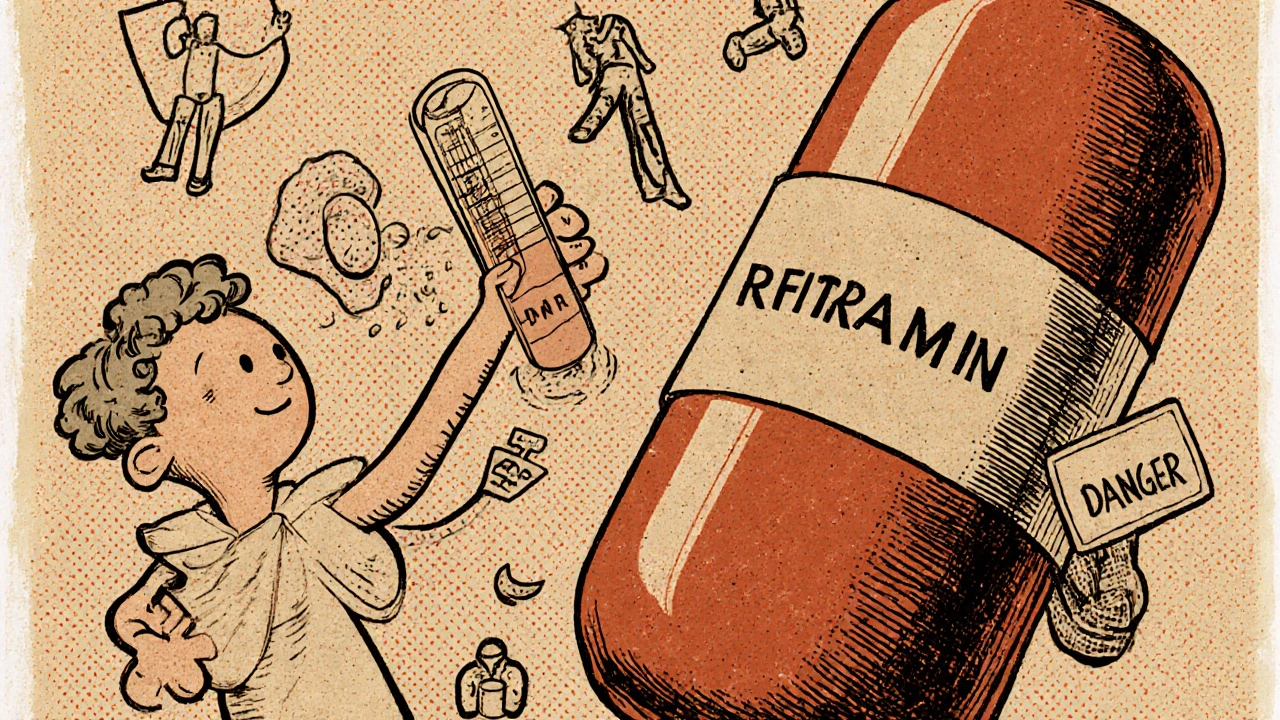
Antivirals Are Also at Risk
Rifampin doesn’t just mess with blood thinners. It also slashes levels of many antivirals used for HIV and hepatitis C. For example:
- Darunavir (HIV): AUC drops up to 80%
- Elvitegravir (HIV): AUC drops by 70-80%
- Atazanavir (HIV): AUC drops by 80%
- Boceprevir (hepatitis C): AUC drops by 90%
When antiviral levels fall too low, the virus doesn’t just come back-it can mutate and become resistant. That means the drug won’t work anymore, even after rifampin is stopped. For HIV patients, this can lead to treatment failure and the need for more complex, expensive, and toxic regimens.
Guidelines from the U.S. Department of Health and Human Services say rifampin should be avoided with most HIV drugs. If there’s no alternative, doctors must switch to antivirals that aren’t affected-like dolutegravir or rilpivirine-and monitor viral load closely.
What Should You Do If You Need Both?
If you’re prescribed rifampin and you’re already on an anticoagulant or antiviral, don’t stop either drug on your own. Talk to your doctor or pharmacist immediately. Here’s what needs to happen:
- Identify the exact drugs you’re taking and their sensitivity to CYP3A4 induction.
- Check if there’s a safer alternative to rifampin-like rifabutin, which is a weaker inducer.
- If rifampin is necessary, switch from warfarin to injectable heparin (LMWH) during treatment.
- If you’re on a DOAC, consider switching to heparin too. DOACs + rifampin is a high-risk combo with no reliable monitoring.
- If you must keep the DOAC, expect to increase the dose significantly and monitor for signs of clotting or bleeding.
- After stopping rifampin, wait two to three weeks before returning to your original dose. Then reduce it gradually under supervision.
Some hospitals still don’t have protocols for this. A 2022 survey found only 12% of U.S. hospitals had written guidelines for managing rifampin-DOAC interactions. That means patients often fall through the cracks.
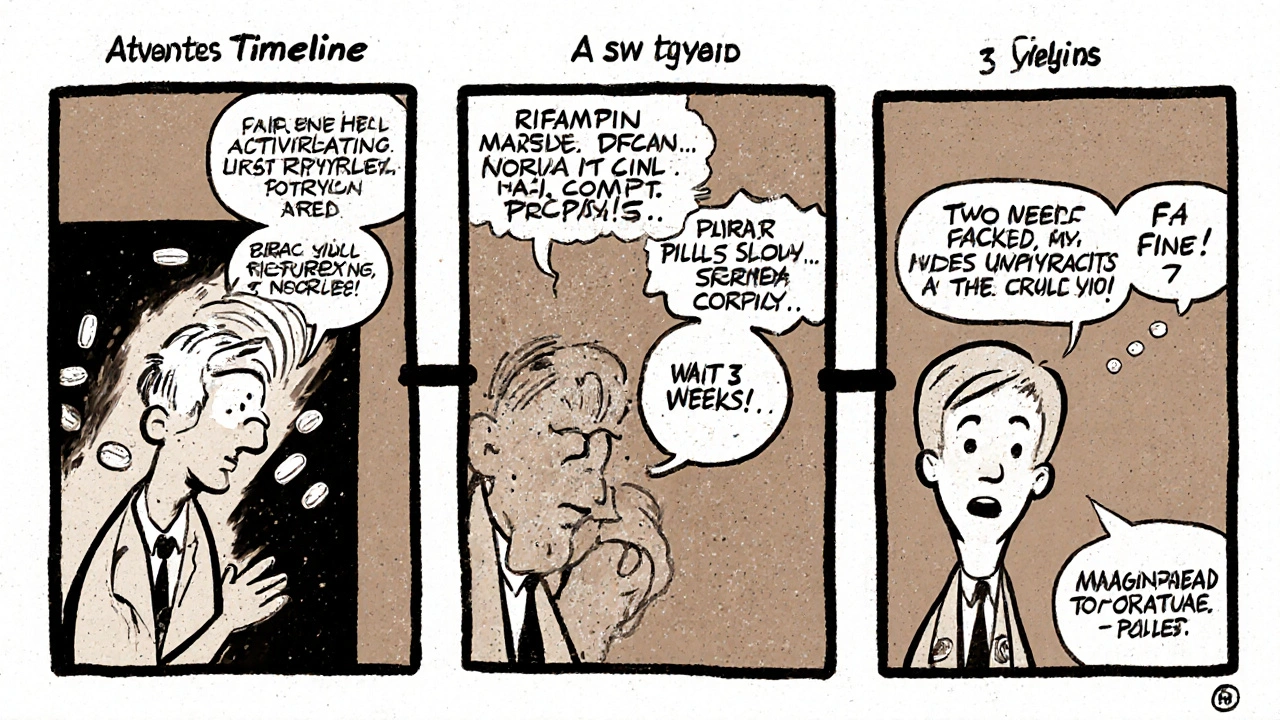
What’s Next? New Drugs Are Being Designed to Avoid This
Pharmaceutical companies are learning from these interactions. The next generation of anticoagulants is being built to avoid CYP enzyme pathways entirely. One example is milvexian, a factor XIa inhibitor currently in trials. Early studies suggest it’s not affected by CYP3A4 inducers like rifampin. That’s huge. If approved, it could be the first anticoagulant that works safely alongside rifampin.
The FDA now requires new drugs to be tested with strong inducers like rifampin before approval. That means newer antivirals and anticoagulants are more likely to come with clear labels about interactions. But the older ones? They’re still out there. And they’re still dangerous when paired with rifampin.
Bottom Line: Don’t Guess. Get Help.
Rifampin is a powerful tool against TB and other infections. But it’s also a silent saboteur of other medications. If you’re taking it, your anticoagulant or antiviral might not be working-even if you feel fine. Symptoms of low anticoagulant levels? Unexplained bruising, swelling in legs, chest pain, shortness of breath. Symptoms of low antiviral levels? Fever, fatigue, worsening symptoms of infection.
There’s no safe way to manage this interaction without professional oversight. Don’t rely on online forums or guesswork. Talk to your pharmacist. Ask your doctor if switching to heparin is an option. And if you’re on a DOAC, make sure your care team knows the risks.
This isn’t a minor warning on a label. It’s a life-or-death interaction that happens every day. Knowing about it could save your life-or someone else’s.
Can I take warfarin with rifampin if I increase the dose?
Increasing the warfarin dose may temporarily restore INR levels, but it’s risky and unstable. The interaction is unpredictable, and small changes in diet, illness, or other medications can cause dangerous swings in INR. Experts recommend switching to injectable heparin (like enoxaparin) during rifampin therapy instead. Once rifampin is stopped, warfarin can be restarted slowly under close monitoring.
Are DOACs safer than warfarin when taking rifampin?
No. DOACs like apixaban, rivaroxaban, and dabigatran are just as vulnerable to rifampin as warfarin-they often drop by 50-67% in blood levels. The problem is worse because DOACs don’t have a simple blood test (like INR) to check if they’re working. You might not realize your anticoagulation has failed until you have a clot or stroke. Most guidelines say to avoid combining DOACs with rifampin entirely.
How long does rifampin’s effect last after stopping it?
Rifampin’s enzyme-inducing effects peak in 5-7 days and can last 2-3 weeks after you stop taking it. That’s because the enzymes your liver made take time to break down. If you return to your normal anticoagulant or antiviral dose too soon, you could overdose. Always wait at least two weeks after stopping rifampin before adjusting doses-and do so under medical supervision.
Is rifabutin a safer alternative to rifampin?
Yes, in many cases. Rifabutin is a weaker inducer of CYP3A4 than rifampin and is sometimes used instead for patients on antivirals or anticoagulants. It still has interactions, but they’re less severe. For example, rifabutin reduces rivaroxaban levels by only about 25%, compared to 60% with rifampin. However, it’s not always available or approved for all uses, and it has its own side effects, including low white blood cell counts. Talk to your doctor to see if it’s an option.
Why don’t more doctors know about this interaction?
Many clinicians focus on the primary condition-like TB-and don’t always review all medications in depth. Also, DOACs are newer, and their interactions with rifampin weren’t fully understood until recent studies. A 2022 survey found only 12% of U.S. hospitals had formal protocols for managing rifampin-DOAC interactions. This gap means patients often get caught in the middle. Always bring a full medication list to every appointment and ask: “Could any of these drugs interfere with each other?”

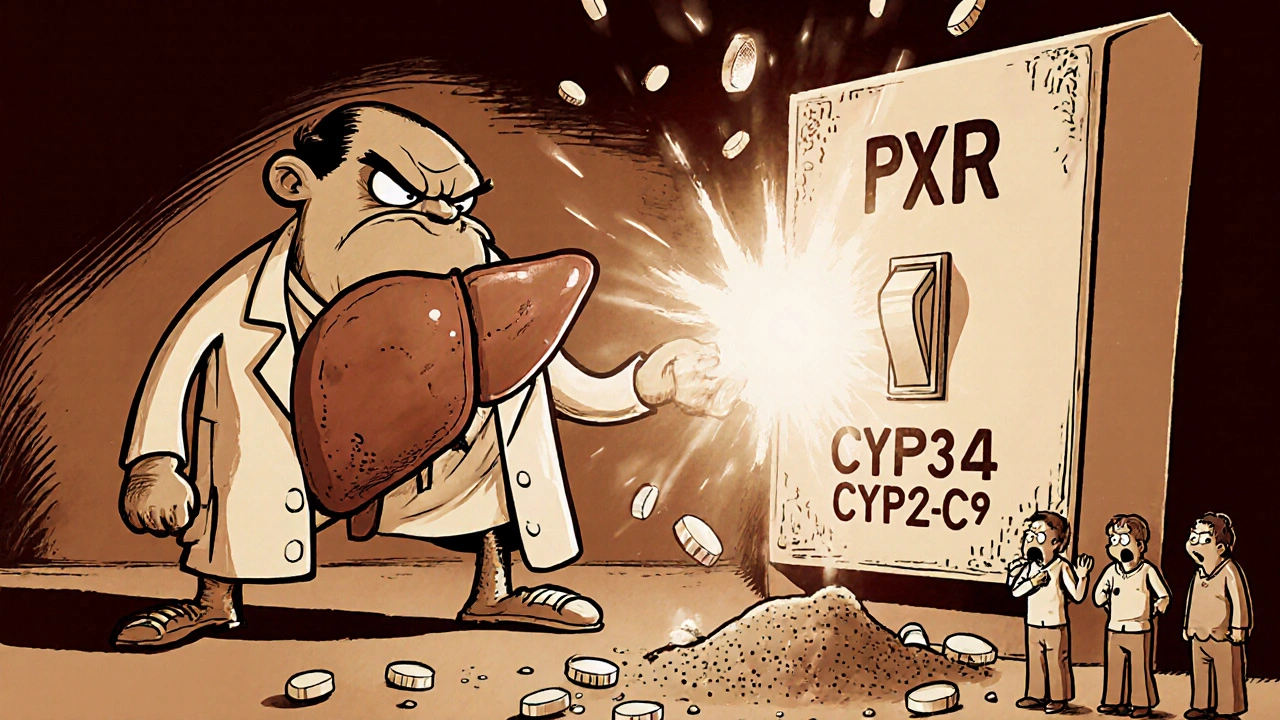
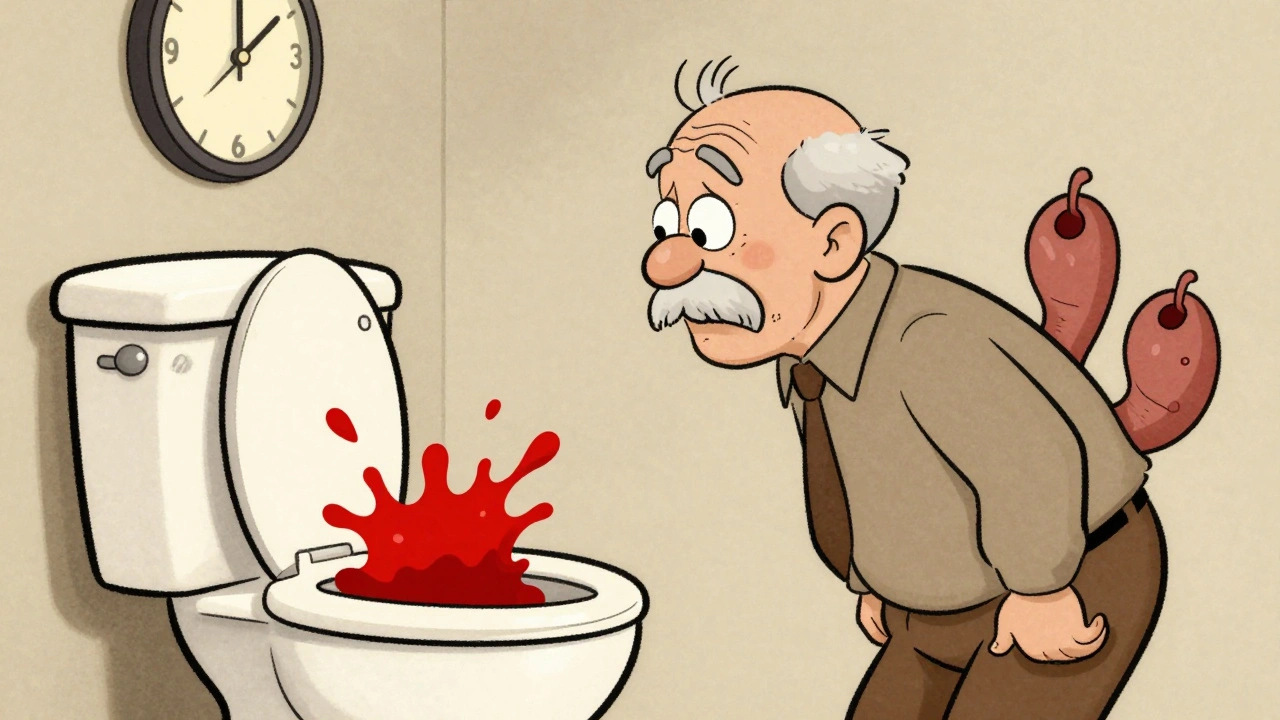
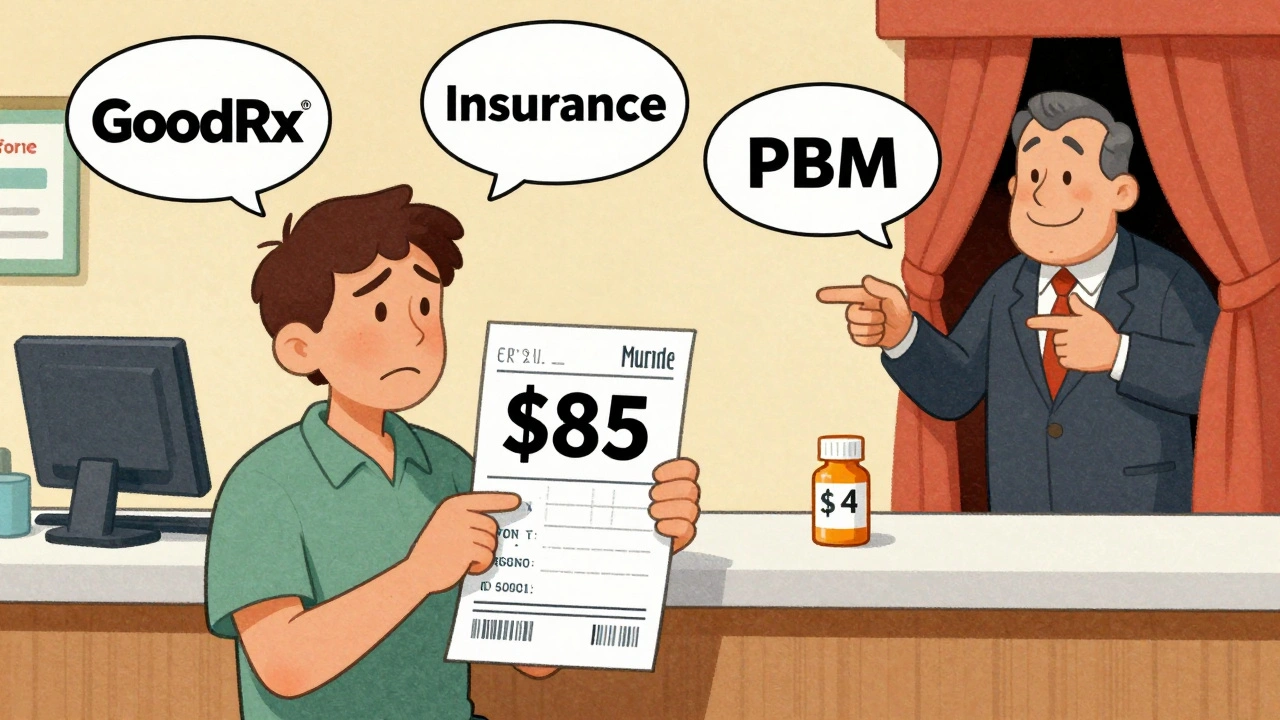
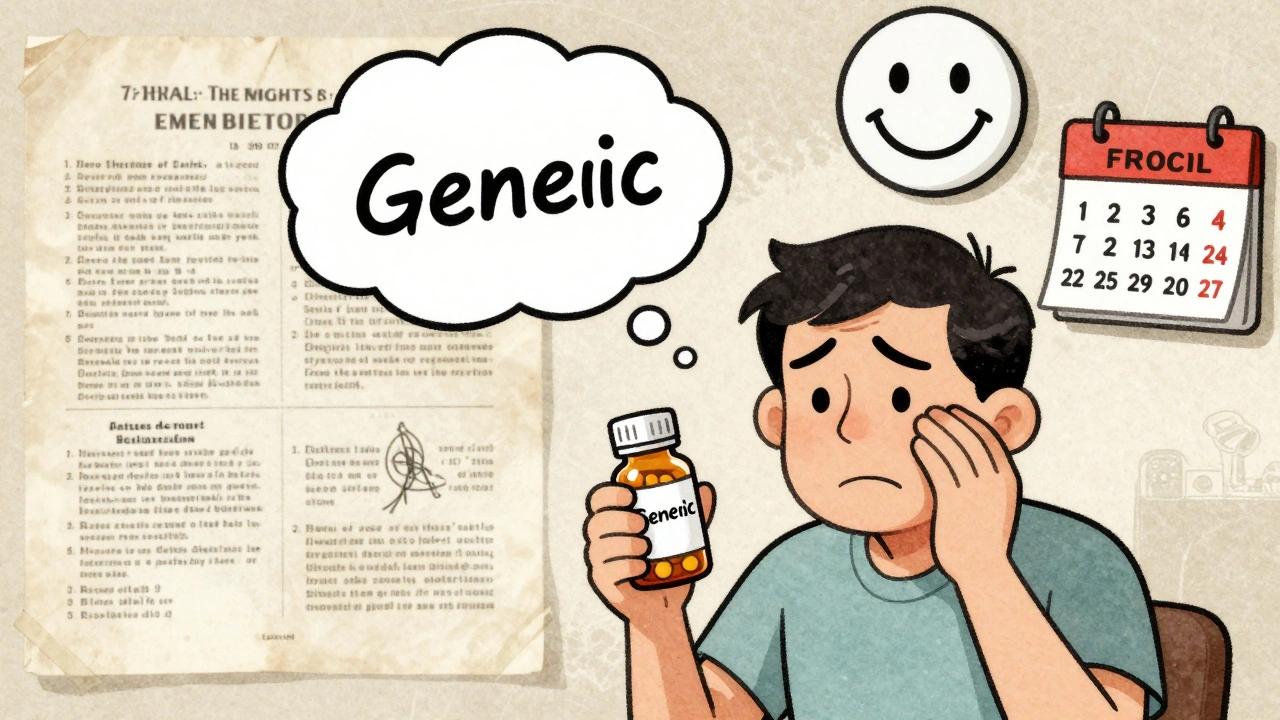
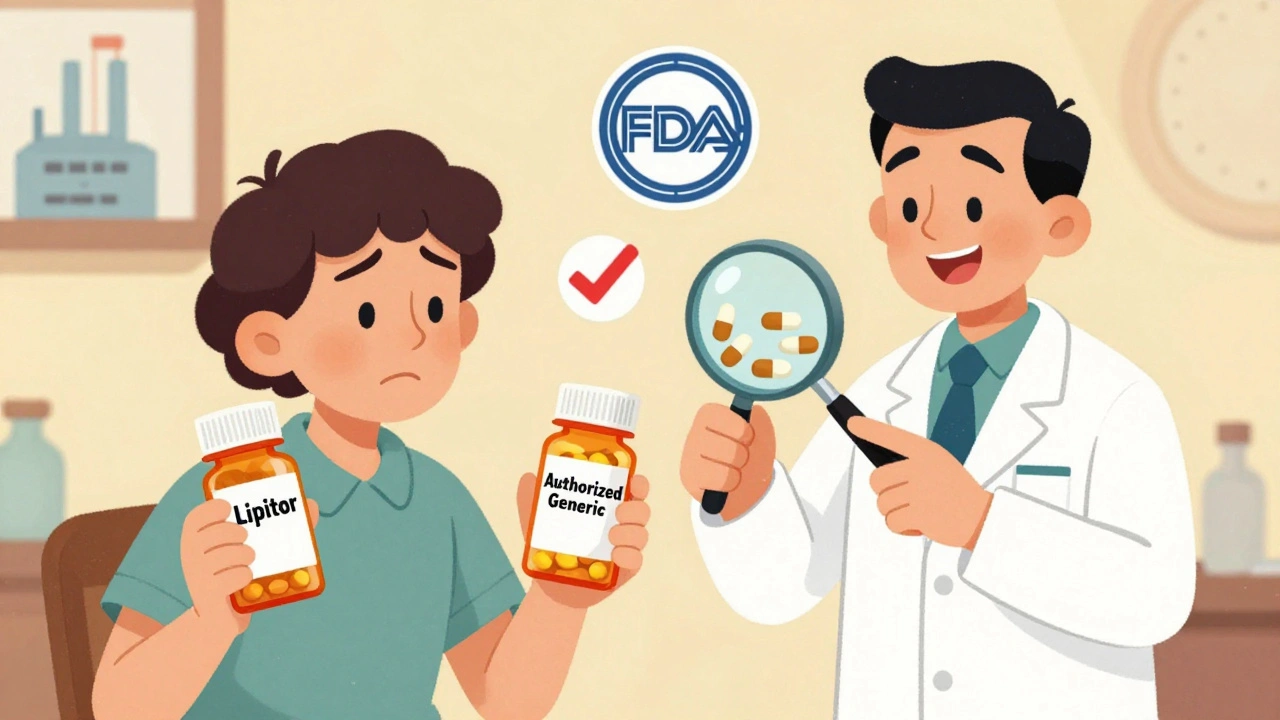
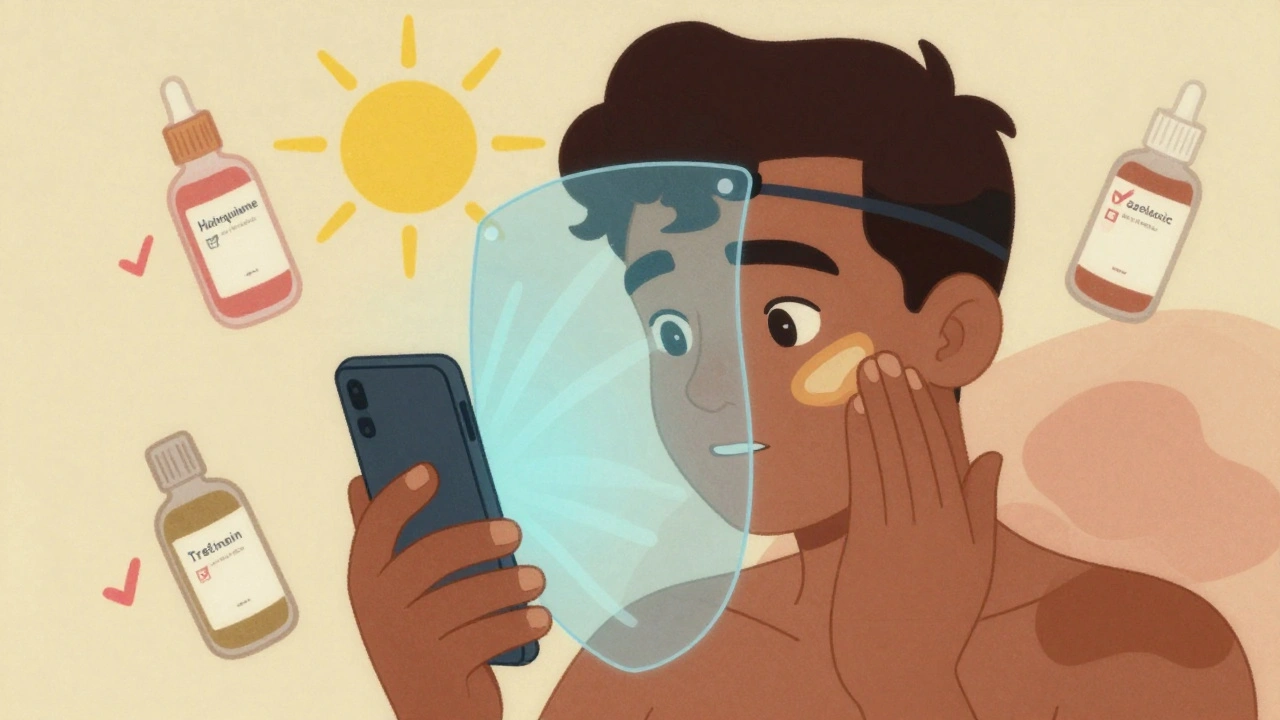
Mike Gordon
Rifampin is one of those drugs that sounds harmless until it wrecks your INR and you end up in the ER with a pulmonary embolism. I’ve seen it happen twice in my hospital unit-both times the patient was on rivaroxaban and thought ‘it’s just a TB drug, how bad could it be?’
Turns out, very bad.
Kathy Pilkinton
Oh please. Another ‘medical warning’ that sounds like it was written by a pharmacist who’s never met a patient. You think people don’t know this? I’ve been on warfarin for 12 years. My pharmacist prints me a new chart every time I pick up rifampin. If you’re not getting monitored, that’s your fault-not the drug’s.
Holly Dorger
I’m a nurse in a rural clinic and this is a huge problem. Patients come in with TB and say they’re on apixaban ‘because it’s easier.’ We don’t have easy access to LMWH here. We do our best, but it’s scary. I wish there was a better alternative than rifampin for places like ours.
Amanda Nicolson
Okay, imagine your body is a factory. Rifampin is the boss who yells, ‘MAKE MORE CLEANING CREWS!’ So now your liver is building enzyme robots nonstop to scrub every other drug out of your system. Warfarin? Gone. Rivaroxaban? Vanished. Antivirals? Poof. And when you stop rifampin? The robots don’t shut off-they keep cleaning for weeks. You think you’re safe? You’re not. You’re just waiting for the next blood clot to show up like a surprise party you didn’t invite.
Jackson Olsen
So if you’re on a DOAC and get rifampin, just switch to heparin shots? That’s rough. I’ve had those. They hurt. But I’d rather hurt than stroke. Thanks for the heads up. This is the kind of thing I wish my doctor had told me before I started rifampin.
Penny Clark
Just had to tell my mom about this. She’s on rivaroxaban and just got diagnosed with TB. She was gonna keep taking it ‘because it’s easier.’ Now she’s calling her doctor to switch. Thank you for this post. I’ve been stressing for days. 💔
Niki Tiki
Why are we even using these fancy new drugs anyway? Warfarin’s been around since the 1950s. It’s cheap, it’s tested, and if you’re dumb enough to mix it with rifampin without monitoring, you deserve what you get. Stop chasing convenience and start paying attention.
Jim Allen
Life’s just a series of chemical negotiations, man. Your liver’s like, ‘I’m gonna make more enzymes because this guy’s got a new drug.’ And your anticoagulant’s like, ‘Cool, I guess I’m not needed anymore.’ We’re all just molecules trying to survive in a body that’s constantly changing the rules. 🤷♂️
Nate Girard
Big shoutout to the pharmacists who catch this stuff before it kills someone. I’ve had mine flag me on rifampin + DOAC combos three times. They’re the real MVPs. If you’re on these meds, don’t skip your med review. It’s not busywork-it’s lifesaving.
Carolyn Kiger
Just read this after my dad got switched from rivaroxaban to enoxaparin during his TB treatment. I didn’t realize how dangerous this was. Thank you for explaining it so clearly. I’m sharing this with everyone I know who’s on blood thinners.
krishna raut
Rifabutin is better for DOACs. 25% drop vs 60%. Use it if possible.
Prakash pawar
Modern medicine is a circus. We have drugs that can cure TB but break your blood thinners. We invented pills you don’t have to test but now they vanish in your liver. We need to stop pretending drugs are safe and start admitting we’re playing Russian roulette with biochemistry
MOLLY SURNO
Thank you for the comprehensive overview. This is an underrecognized issue in primary care. I’ve reviewed the guidelines and will be updating our clinic’s protocol for patients on anticoagulants requiring rifampin therapy. The 2-3 week washout period is critical and often overlooked.
Alex Hundert
My brother took rifampin for TB and kept his apixaban. He had a stroke 10 days after finishing the course. They thought it was a coincidence. It wasn’t. The enzymes were still cooking. This isn’t theoretical. It’s real. And it’s deadly.